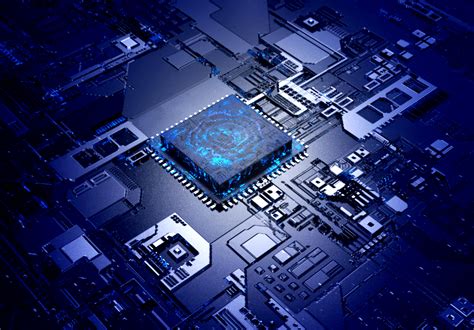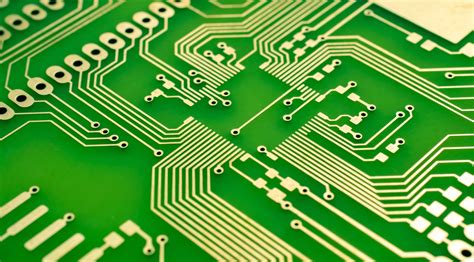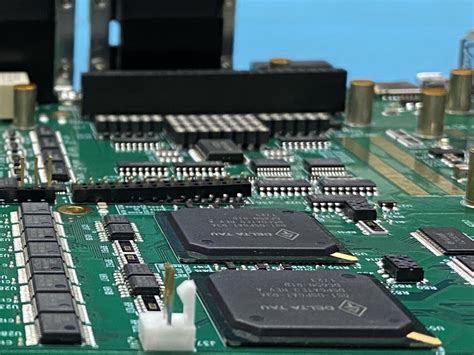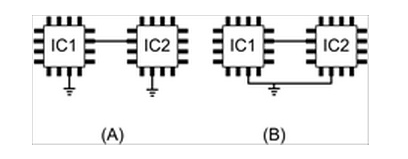Connector for flexible pcb
Advantages Of Using Connectors In Flexible PCB Design
In the realm of modern electronics, the integration of flexible printed circuit boards (PCBs) has revolutionized the way devices are designed and manufactured.
One of the critical components that enhance the functionality and versatility of flexible PCBs is the connector.
The use of connectors in flexible PCB design offers numerous advantages, making them indispensable in various applications. To begin with, connectors provide a reliable means of establishing electrical connections between different parts of a circuit. This is particularly important in flexible PCBs, where the board’s ability to bend and flex necessitates a robust connection that can withstand mechanical stress. Connectors are designed to maintain a stable connection even when subjected to movement, ensuring consistent performance and reducing the risk of circuit failure.
Moreover, connectors facilitate modular design, allowing for easy assembly and disassembly of electronic components.
This modularity is especially beneficial in applications where space is limited, and components need to be densely packed. By using connectors, designers can create compact and efficient layouts that maximize the use of available space. Additionally, the ability to easily connect and disconnect components simplifies maintenance and repair processes, as faulty parts can be quickly replaced without the need for extensive rework.
Another significant advantage of using connectors in flexible PCB design is the enhancement of signal integrity.
Connectors are engineered to minimize signal loss and interference, which is crucial in high-frequency applications. By providing a controlled impedance path, connectors help maintain the quality of the transmitted signals, ensuring that data is accurately conveyed across the circuit. This is particularly important in applications such as telecommunications and data processing, where even minor signal degradation can lead to significant performance issues.
Furthermore, connectors contribute to the overall durability and longevity of flexible PCBs.
By providing a secure and stable connection, they reduce the mechanical stress on solder joints and other components, which can be a common point of failure in flexible circuits. This increased durability translates to a longer lifespan for the device, reducing the need for frequent replacements and contributing to cost savings over time.
In addition to these technical benefits, connectors also offer design flexibility.
They come in various shapes, sizes, and configurations, allowing designers to choose the most suitable option for their specific application. This versatility enables the creation of customized solutions that meet the unique requirements of different projects. Whether it’s a compact connector for a wearable device or a robust connector for an industrial application, the wide range of available options ensures that designers can find the perfect fit for their needs.
In conclusion, the use of connectors in flexible PCB design offers a multitude of advantages that enhance the performance, reliability, and versatility of electronic devices.
By providing reliable electrical connections, facilitating modular design, enhancing signal integrity, and contributing to durability, connectors play a crucial role in the success of flexible PCBs. As technology continues to advance and the demand for more sophisticated electronic devices grows, the importance of connectors in flexible PCB design is likely to increase, making them an essential component in the future of electronics.

Key Considerations For Selecting Connectors For Flexible PCBs
When selecting connectors for flexible printed circuit boards (PCBs), several key considerations must be taken into account to ensure optimal performance and reliability. Flexible PCBs, known for their adaptability and space-saving advantages, are increasingly used in various applications, from consumer electronics to medical devices. However, the choice of connectors can significantly impact the functionality and longevity of these circuits. Therefore, understanding the critical factors involved in selecting the right connectors is essential for engineers and designers.
Firstly, it is crucial to consider the mechanical properties of the connectors.
Flexible PCBs are often used in applications where movement or bending is required, such as in wearable technology or foldable devices. Consequently, the connectors must be able to withstand repeated flexing without compromising their integrity. Connectors with high flexural endurance and robust mechanical design are ideal for such applications. Additionally, the size and weight of the connectors should be compatible with the flexible PCB to maintain the overall lightweight and compact nature of the device.
Moreover, the electrical performance of the connectors is another vital consideration.
The connectors must provide reliable electrical connections to ensure the efficient transmission of signals and power. Factors such as contact resistance, current-carrying capacity, and signal integrity should be evaluated. Low contact resistance is essential to minimize power loss and ensure efficient operation, while adequate current-carrying capacity is necessary to handle the electrical load without overheating. Furthermore, maintaining signal integrity is crucial, especially in high-frequency applications, to prevent data loss or corruption.
In addition to mechanical and electrical properties, environmental factors play a significant role in connector selectio3n.
Flexible PCBs are often exposed to various environmental conditions, including temperature fluctuations, humidity, and potential exposure to chemicals. Therefore, connectors must be designed to withstand these conditions without degradation. Materials that offer resistance to corrosion, moisture, and temperature extremes are preferable. Additionally, connectors with appropriate sealing mechanisms can provide added protection against environmental factors, ensuring long-term reliability.
Another important aspect to consider is the ease of assembly and maintenance.
Connectors that are easy to install and remove can significantly reduce assembly time and costs. This is particularly important in applications where frequent maintenance or upgrades are required. Connectors with user-friendly designs, such as those with snap-fit or push-pull mechanisms, can facilitate quick and secure connections. Furthermore, connectors that allow for easy access and replacement can enhance the overall serviceability of the device.
Cost considerations also play a role in the selection process.
While it is important to choose connectors that meet all technical requirements, budget constraints must also be taken into account. Balancing performance with cost-effectiveness is essential to ensure that the final product remains competitive in the market. Therefore, evaluating different connector options and their associated costs can help in making an informed decision.
In conclusion, selecting the right connectors for flexible PCBs involves a comprehensive evaluation of various factors, including mechanical properties, electrical performance, environmental resistance, ease of assembly, and cost. By carefully considering these aspects, engineers and designers can ensure that the chosen connectors will enhance the performance and reliability of flexible PCBs, ultimately contributing to the success of the final product.

Innovations In Connector Technology For Flexible PCBs
In recent years, the electronics industry has witnessed significant advancements in connector technology, particularly in the realm of flexible printed circuit boards (PCBs). As the demand for smaller, lighter, and more versatile electronic devices continues to grow, the need for innovative connector solutions that can accommodate the unique properties of flexible PCBs has become increasingly critical.
Flexible PCBs, known for their ability to bend and conform to various shapes, offer numerous advantages over traditional rigid PCBs, including enhanced durability, reduced weight, and improved space efficiency. However, these benefits also present unique challenges in terms of connectivity, necessitating the development of specialized connectors that can maintain reliable electrical connections under dynamic conditions.
One of the primary innovations in connector technology for flexible PCBs is the development of low-profile connectors.
These connectors are designed to minimize the space they occupy on the PCB, thereby maximizing the available area for other components. By reducing the connector’s height and footprint, manufacturers can create more compact and streamlined devices, which is particularly advantageous in applications where space is at a premium, such as in wearable technology and portable electronics. Furthermore, low-profile connectors often incorporate advanced locking mechanisms to ensure a secure connection, even when subjected to mechanical stress or vibration.
In addition to low-profile designs, another significant advancement in connector technology is the use of high-flexibility materials.
Traditional connectors, often made from rigid materials, can impede the flexibility of the PCB, leading to potential failure points. To address this issue, manufacturers have begun utilizing materials that can withstand repeated bending and flexing without compromising the integrity of the connection. These materials not only enhance the durability of the connector but also contribute to the overall longevity of the device, making them ideal for applications that require frequent movement or bending.
Moreover, the integration of advanced contact technologies has further improved the performance of connectors for flexible PCBs.
For instance, some connectors now feature spring-loaded contacts, which maintain consistent pressure against the PCB pads, ensuring a stable electrical connection even under dynamic conditions. This innovation is particularly beneficial in applications where the device is subject to constant motion or vibration, as it helps prevent intermittent connections that could lead to device malfunction.
Another noteworthy development is the emergence of connectors with enhanced environmental resistance.
As flexible PCBs are increasingly used in outdoor and harsh environments, there is a growing need for connectors that can withstand exposure to moisture, dust, and extreme temperatures. To meet this demand, manufacturers have introduced connectors with improved sealing and protective coatings, which help shield the connection from environmental factors that could otherwise compromise its performance.
In conclusion, the innovations in connector technology for flexible PCBs have significantly expanded the possibilities for electronic device design and functionality. By addressing the unique challenges posed by flexible PCBs, these advancements have enabled the creation of more compact, durable, and versatile devices that can operate reliably in a wide range of environments. As the electronics industry continues to evolve, it is likely that we will see further developments in connector technology, driven by the ongoing pursuit of smaller, more efficient, and more adaptable electronic solutions.

Common Challenges In Integrating Connectors With Flexible PCBs
Integrating connectors with flexible printed circuit boards (PCBs) presents a unique set of challenges that engineers and designers must navigate to ensure optimal performance and reliability. As the demand for smaller, lighter, and more versatile electronic devices continues to grow, flexible PCBs have become increasingly popular due to their ability to bend and conform to various shapes. However, the integration of connectors with these flexible substrates is not without its difficulties.
One of the primary challenges in this integration process is ensuring mechanical stability.
Flexible PCBs, by their very nature, are designed to bend and flex, which can lead to mechanical stress at the connector interface. This stress can result in intermittent connections or even complete failure if not properly managed. To address this issue, designers often employ strain relief techniques, such as using stiffeners or reinforcing materials around the connector area. These measures help distribute mechanical stress more evenly and prevent damage to the delicate traces on the flexible PCB.
In addition to mechanical concerns, electrical performance is another critical factor that must be considered.
The connection between the flexible PCB and the connector must maintain a low-resistance path to ensure efficient signal transmission. Any increase in resistance can lead to signal degradation, which is particularly problematic in high-speed or high-frequency applications. To mitigate this risk, careful attention must be paid to the design of the contact points and the choice of materials used in the connector. Gold plating, for example, is often used to enhance conductivity and reduce the risk of oxidation, which can further compromise electrical performance.
Thermal management also poses a significant challenge when integrating connectors with flexible PCBs.
Electronic devices generate heat during operation, and flexible PCBs are often used in compact applications where heat dissipation is limited. The presence of a connector can exacerbate this issue by introducing additional thermal resistance. To address this, designers may incorporate thermal vias or heat spreaders to facilitate heat dissipation away from the connector area. Additionally, selecting connectors with materials that have good thermal conductivity can help manage heat more effectively.
Another consideration is the environmental conditions to which the device will be exposed.
Flexible PCBs are often used in applications where they may be subject to harsh environments, such as extreme temperatures, humidity, or exposure to chemicals. The connectors used in these applications must be able to withstand these conditions without compromising performance. This often requires the use of specialized materials and coatings that provide protection against environmental factors.
Finally, manufacturability and cost are always important considerations in the design process.
The integration of connectors with flexible PCBs can be more complex and costly than with rigid PCBs due to the additional steps required to ensure reliability. This includes the need for specialized equipment and processes to handle the flexible substrates without causing damage. Balancing these factors while maintaining performance and reliability is a key challenge for engineers.
In conclusion, while the integration of connectors with flexible PCBs presents several challenges, careful consideration of mechanical stability, electrical performance, thermal management, environmental resilience, and manufacturability can lead to successful designs. As technology continues to advance, ongoing innovation in materials and design techniques will further enhance the capabilities and applications of flexible PCBs in the electronics industry.

Future Trends In Connector Solutions For Flexible PCBs
As the electronics industry continues to evolve, the demand for more compact, efficient, and versatile devices is driving innovation in various components, including connectors for flexible printed circuit boards (PCBs). Flexible PCBs, known for their ability to bend and conform to different shapes, are increasingly being used in a wide range of applications, from consumer electronics to medical devices and automotive systems. Consequently, the development of advanced connector solutions for these flexible circuits is becoming a focal point for manufacturers and designers alike.
One of the most significant trends in connector solutions for flexible PCBs is miniaturization.
As devices become smaller and more complex, the need for connectors that can fit into limited spaces without compromising performance is paramount. Manufacturers are responding by developing connectors with reduced footprints and lower profiles, allowing for seamless integration into compact designs. This trend is particularly evident in the consumer electronics sector, where the demand for slimmer and lighter devices is relentless.
In addition to miniaturization, there is a growing emphasis on enhancing the reliability and durability of connectors used with flexible PCBs.
Given that these circuits are often subjected to mechanical stress due to bending and flexing, connectors must be designed to withstand such conditions without failure. To address this, manufacturers are exploring the use of advanced materials and innovative design techniques. For instance, connectors with reinforced contact points and flexible housing materials are being developed to ensure long-term reliability even in demanding environments.
Moreover, the push towards higher data transfer rates is influencing the design of connectors for flexible PCBs.
As devices require faster and more efficient data transmission, connectors must be capable of supporting high-speed signals without degradation. This has led to the development of connectors with improved signal integrity features, such as optimized contact geometries and shielding techniques that minimize electromagnetic interference. These advancements are crucial for applications in telecommunications and data centers, where performance and speed are critical.
Another emerging trend is the integration of smart features into connector solutions.
As the Internet of Things (IoT) continues to expand, there is a growing need for connectors that can support not only power and data transmission but also additional functionalities such as sensing and communication. Smart connectors that incorporate sensors or wireless communication modules are being developed to meet these requirements, enabling more intelligent and interconnected systems.
Sustainability is also becoming a key consideration in the development of connector solutions for flexible PCBs.
With increasing awareness of environmental issues, manufacturers are seeking ways to reduce the ecological impact of their products. This includes the use of eco-friendly materials and processes, as well as designing connectors that are easier to recycle or dispose of at the end of their lifecycle. Such efforts are aligned with broader industry trends towards more sustainable and responsible manufacturing practices.
In conclusion, the future of connector solutions for flexible PCBs is being shaped by several key trends, including miniaturization, enhanced reliability, high-speed data capabilities, smart integration, and sustainability. As these trends continue to evolve, they will undoubtedly lead to the development of more advanced and versatile connectors that can meet the ever-changing demands of modern electronic devices. For manufacturers and designers, staying abreast of these trends will be essential to remain competitive in this dynamic and rapidly advancing field.






